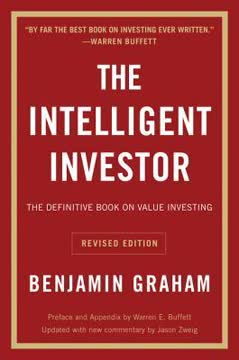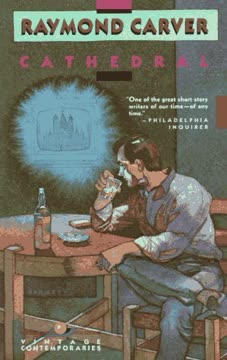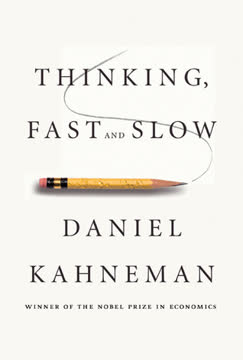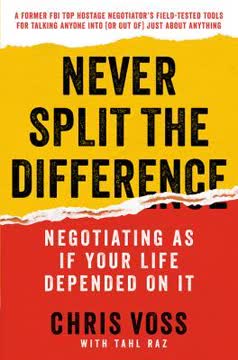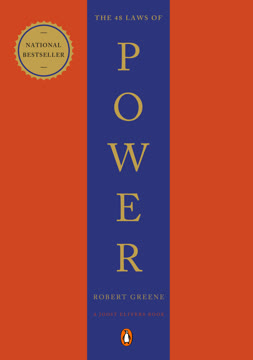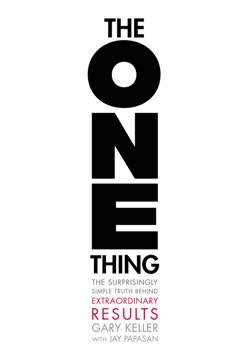つの重要なポイント
1. マインドマップ:究極の組織的思考ツール
マインドマップは究極の組織的思考ツールであり、脳のスイスアーミーナイフです!
マインドマップはノート取りを革命的に変えます。 マインドマップは中心のアイデアから放射状に広がる視覚的な図であり、色、画像、キーワードを使って情報を整理します。この方法は脳の自然な思考プロセスを反映しており、理解しやすく、記憶しやすく、新しいアイデアを生み出しやすくします。
マインドマップの主な特徴:
- 主題を表す中心画像
- 中心から放射状に広がる主要なテーマの枝
- 支持的な詳細を持つサブブランチ
- 色、シンボル、画像の使用
マインドマップは脳の両半球を活用し、論理的(左脳)および創造的(右脳)な思考を組み合わせます。このシナジーは記憶保持、問題解決能力、全体的な認知機能を向上させます。
2. マインドマッピングで脳の潜在能力を引き出す
脳はシナジーと反復という2つの重要な原則で動作します。
脳の能力を理解する。 人間の脳には約1兆個のニューロンが含まれており、それぞれが標準的なコンピュータよりも強力です。この広大なネットワークは、ほぼ無限の思考パターンと接続の可能性を生み出します。
脳の主要な原則:
- シナジー:全体は部分の総和よりも大きい
- 反復:脳を使えば使うほど強くなる
マインドマップはこれらの原則を活用し、連想的な思考と情報への繰り返しの関与を促進します。アイデア間の視覚的なつながりを作ることで、マインドマップは脳の自然な新しい神経経路を形成する能力を刺激し、学習と創造性を向上させます。
3. 学習における連想と想像力の力
一枚の絵は千の言葉に値し、想像力を使うのに役立ちます。
視覚的記憶を活用する。 脳は視覚的な認識と記憶に驚異的な能力を持っています。ノート取りに画像、色、空間的関係を取り入れることで、情報を記憶し理解する能力を劇的に向上させることができます。
学習を強化する技術:
- 鮮明なイメージとシンボルを使用する
- 色分けを活用する
- アイデア間に記憶に残る連想を作る
- 学習プロセスに複数の感覚を関与させる
マインドマップはこれらの技術を自然に取り入れており、学習、ブレインストーミング、問題解決に最適なツールです。抽象的な概念を具体的な視覚表現に変えることで、情報をよりアクセスしやすく、記憶しやすくします。
4. TEFCAS:究極の成功の公式
試行、イベント、フィードバック、チェック、調整、成功
成長マインドセットを受け入れる。 TEFCASは学習と成功を達成するための強力なフレームワークです。失敗を学習の機会と見なし、フィードバックに基づいてアプローチを絶えず調整することの重要性を強調します。
TEFCASプロセス:
- 試行:新しいことに挑戦する
- イベント:何が起こるか観察する
- フィードバック:結果について情報を収集する
- チェック:フィードバックを分析する
- 調整:必要な変更を行う
- 成功:目標を達成するか、次の試行のために学ぶ
この反復プロセスは脳の自然な学習メカニズムと一致しており、個人の成長からプロフェッショナルな目標まで、あらゆる分野に適用できます。マインドマップを使用して進捗を追跡し、TEFCASの旅を視覚化することで、焦点とモチベーションを維持するのに役立ちます。
5. マインドマッピング技術で創造性を高める
本当に飛躍的に進歩し、記憶力を向上させたいなら、何かを覚えたいときに積極的に想像力と連想を使う必要があります。
創造的思考を育む。 マインドマップは単なる組織ツールではなく、創造的思考の強力な触媒です。非線形思考と視覚的連想を促進することで、マインドマップは脳の創造的な潜在能力を引き出します。
創造的なマインドマッピング技術:
- 色と画像を自由に使用する
- アイデア間に予期しないつながりを作る
- ユーモアと誇張を取り入れる
- プロセスにすべての感覚を関与させる
- 自由連想と「ワイルド」なアイデアを許容する
これらの技術を定期的に練習することで、アイデア生成の流暢さが増し、問題解決の柔軟性が高まり、思考の独創性が向上します。マインドマッピングに熟達するにつれて、創造的な能力がページを超えて生活のあらゆる側面に広がることに気づくでしょう。
6. 身体的なフィットネスが精神的なパフォーマンスを向上させる
身体的なフィットネスと精神的な警戒心および感情の安定性との間には明確な関係が見つかっています。
身体と心を一緒に育む。 身体的なフィットネスは精神的なパフォーマンスを最適化する上で重要な役割を果たします。定期的な運動、適切な栄養、十分な休息はすべて、認知機能の向上、創造性の増加、感情的な健康の改善に寄与します。
精神力のための身体的フィットネスの重要な側面:
- 脳への酸素供給を増やす有酸素運動
- 全体的な身体と心のバランスのための筋力トレーニング
- ストレスと緊張を軽減する柔軟性運動
- 脳機能を支える適切な栄養
- 記憶の統合と創造性のための十分な睡眠
フィットネスルーチンにマインドマップを取り入れることで、ワークアウトを計画し、進捗を追跡し、目標を視覚化するのに役立ちます。身体的および精神的な実践のシナジーは、全体的な健康と認知パフォーマンスの大幅な向上につながる可能性があります。
7. 日常生活にマインドマップを適用して成功を収める
マインドマップは仕事のツールだけではなく、社会生活や個人的な生活の計画や整理にも役立ち、創造性を驚くべき新しい高みに引き上げることができます。
日常生活にマインドマップを統合する。 マインドマップの多用途性は、個人的およびプロフェッショナルなさまざまな用途において非常に価値のあるツールです。マインドマッピングを生活のさまざまな側面に取り入れることで、生産性、創造性、全体的な成功を向上させることができます。
マインドマップの日常的な応用:
- 仕事:プロジェクトの計画、会議のノート取り、プレゼンテーションの準備
- 教育:試験勉強、エッセイの執筆、研究の整理
- 個人的な生活:目標設定、イベントの計画、アイデアのブレインストーミング
- 問題解決:複雑な状況の分析、解決策の生成
- 創造性:新しいコンセプトの開発、芸術的なアイデアの探求
生活のさまざまな分野で一貫してマインドマップを使用することで、より統合された効率的な思考プロセスを発展させることができます。この情報管理とアイデア生成の全体的なアプローチは、洞察力の向上、意思決定の質の向上、あらゆる取り組みにおける成功の増加につながるでしょう。
最終更新日:
FAQ
What's "The Ultimate Book of Mind Maps" about?
- Overview: "The Ultimate Book of Mind Maps" by Tony Buzan is a comprehensive guide to using Mind Maps as a tool for enhancing creativity, memory, and overall life success.
- Purpose: The book aims to teach readers how to unlock their brain's potential by using Mind Maps to organize thoughts, solve problems, and plan effectively.
- Structure: It covers the basics of Mind Mapping, the science behind it, and practical applications in various aspects of life, including work, education, and personal development.
- Author's Expertise: Tony Buzan, a renowned expert in the field of mental literacy, shares insights and techniques developed over decades of research and practice.
Why should I read "The Ultimate Book of Mind Maps"?
- Unlock Creativity: The book provides tools to enhance your creative thinking, allowing you to generate innovative ideas and solutions.
- Improve Memory: It offers strategies to boost memory retention and recall, making learning more efficient and effective.
- Life Transformation: By applying Mind Maps, you can improve time management, goal setting, and personal organization, leading to a more successful and fulfilling life.
- Expert Guidance: With Tony Buzan's expertise, you gain access to proven methods that have helped millions worldwide.
What are the key takeaways of "The Ultimate Book of Mind Maps"?
- Mind Mapping Basics: Learn the fundamental principles and steps to create effective Mind Maps.
- Brain Synergy: Understand how Mind Maps align with the brain's natural way of thinking, enhancing learning and creativity.
- Practical Applications: Discover how to use Mind Maps in everyday situations, from planning meetings to personal goal setting.
- Success Formula: The book introduces the TEFCAS model, a framework for achieving success through trial, feedback, and adjustment.
How do Mind Maps work according to Tony Buzan?
- Whole-Brain Thinking: Mind Maps engage both the left and right hemispheres of the brain, promoting holistic thinking.
- Visual Structure: They use images, colors, and curved lines to represent ideas, making information more memorable and engaging.
- Associative Thinking: Mind Maps encourage the brain to make connections between ideas, facilitating deeper understanding and creativity.
- Flexible and Dynamic: Unlike linear notes, Mind Maps allow for the free flow of ideas, adapting to the brain's natural thought processes.
What are the seven steps to making a Mind Map?
- Start in the Center: Begin with a central image or word that represents the main idea.
- Use Images and Colors: Incorporate visuals and colors to stimulate the brain and enhance memory.
- Connect Branches: Link main branches to the central image and sub-branches to main branches, reflecting the brain's associative nature.
- Use Curved Lines: Draw branches as curved lines to keep the Mind Map visually engaging and dynamic.
- One Word per Line: Use single keywords to maximize flexibility and trigger associations.
- Use Images Throughout: Add images to branches to reinforce ideas and aid recall.
- Keep it Simple: Maintain a clear and organized structure to ensure the Mind Map is easy to understand and use.
How can Mind Maps help in everyday success?
- Work Efficiency: Use Mind Maps to plan meetings, organize projects, and enhance productivity at work.
- Personal Development: Apply Mind Maps for goal setting, problem-solving, and personal growth.
- Social Life: Plan events, manage social commitments, and improve communication with Mind Maps.
- Life Planning: Create Mind Maps to visualize and achieve long-term life goals and aspirations.
What is the TEFCAS model in "The Ultimate Book of Mind Maps"?
- Trial: Begin with an attempt or experiment in any learning or problem-solving situation.
- Event: Observe the outcome of the trial, whether successful or not.
- Feedback: Gather information and insights from the event to understand what worked and what didn't.
- Check: Analyze the feedback against your goals to identify areas for improvement.
- Adjust: Make necessary changes to your approach based on the feedback and analysis.
- Success: Use the refined approach to achieve your desired outcome, repeating the cycle as needed.
How does Tony Buzan suggest using Mind Maps for creative thinking?
- Brainstorming Tool: Use Mind Maps to generate and organize ideas during brainstorming sessions.
- Association and Imagination: Encourage the brain to make connections and use imagination to explore new possibilities.
- Visual Stimulation: Incorporate colors and images to engage the brain's creative centers and enhance idea generation.
- Flexibility: Allow for the free flow of ideas, adapting the Mind Map as new thoughts and connections emerge.
What are some practical examples of Mind Maps in action?
- Meeting Planning: Use Mind Maps to organize agendas, track tasks, and ensure all aspects of a meeting are covered.
- Essay Writing: Plan and structure essays with Mind Maps to ensure coherent arguments and comprehensive coverage of topics.
- Language Learning: Create Mind Maps to memorize vocabulary and practice language skills through visual associations.
- Event Planning: Organize events, such as weddings or parties, with Mind Maps to manage details and ensure success.
What are the best quotes from "The Ultimate Book of Mind Maps" and what do they mean?
- "A Mind Map is the ultimate organizational thinking tool – the Swiss army knife of the brain!" This quote highlights the versatility and effectiveness of Mind Maps in organizing thoughts and ideas.
- "Imagination is more important than knowledge, for imagination is limitless." Emphasizing the power of creativity, this quote encourages readers to value and cultivate their imaginative abilities.
- "You are the engineer and architect of your own physical brain, and the universes of thought that reside within it." This quote inspires readers to take control of their mental development and harness the power of their brains.
- "If you never give up, you are a winner." A reminder of the importance of persistence and resilience in achieving success.
How can Mind Maps improve memory and learning?
- Visual Memory: Mind Maps use images and colors, which are more easily remembered than plain text.
- Associative Learning: They encourage the brain to make connections between ideas, enhancing understanding and recall.
- Repetition and Review: Mind Maps facilitate regular review of information, reinforcing memory retention.
- Engagement: By making learning more interactive and engaging, Mind Maps help maintain focus and interest.
What are some advanced techniques for using Mind Maps?
- Paradigm Shifts: Use Mind Maps to identify and explore new frameworks or perspectives on a topic.
- Creative Problem Solving: Apply Mind Maps to brainstorm solutions and visualize complex problems.
- Life Vision Mapping: Create Mind Maps to outline and achieve long-term personal and professional goals.
- Collaborative Mind Mapping: Use Mind Maps in group settings to enhance teamwork and collective idea generation.
レビュー
本書『The Ultimate Book of Mind Maps』は賛否両論の評価を受けている。多くの人々は、そのコンセプトや思考の整理、記憶力の向上、生産性の向上に役立つ点を称賛している。読者は明確な説明と多様な例を評価している。しかし、一部の人々は本書が繰り返しが多く、過度に宣伝的であり、特定の分野で深みが欠けていると批判している。初心者には役立つと感じられる一方で、上級者はより洗練された戦略を求めるかもしれない。マインドマッピングの技法は広く価値があると認識されているが、本書の実行に関する意見は様々である。
Similar Books

